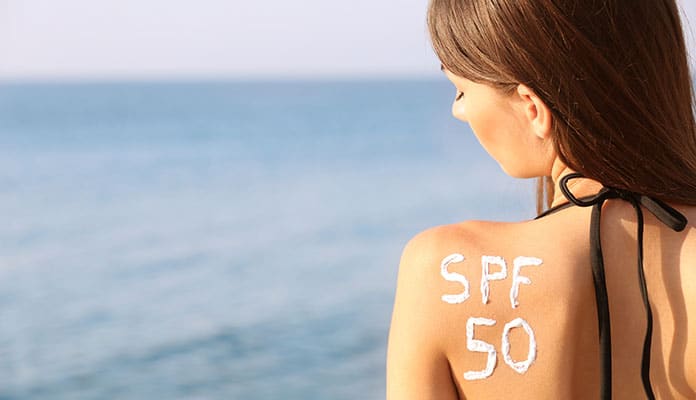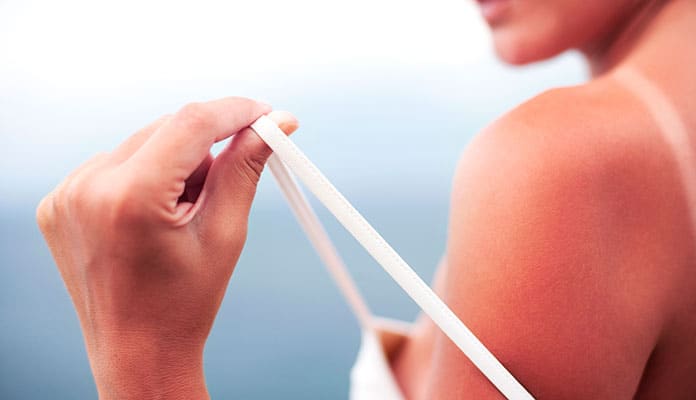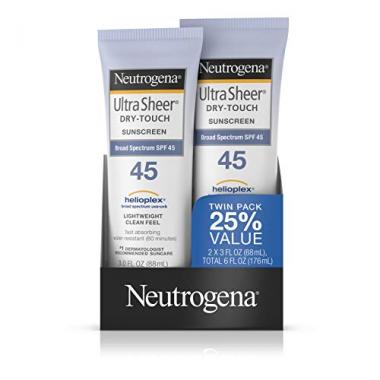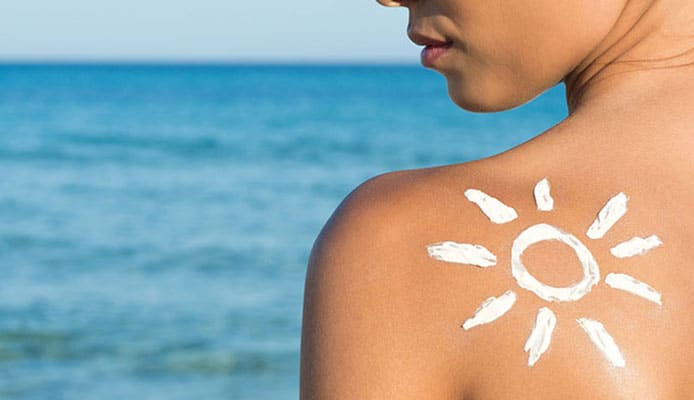
People with fair skin fall to the stereotype that they cannot tan. But the fact is, everyone can brown; it just takes longer for some than it does for others.
Tanning is not as simple as just lying on a sandy beach or swinging in a hammock in your backyard and waiting for the sun to do its job (though for some people, this is exactly how it works). It is a process, and the more you know about it, the better equipped you will be to attain the perfect tan.
There is a lot of science on how and why we bronze. There are also many risks involved. If you take the time to research the process a little and become aware of the dangers, you can tan effectively, regardless of your skin tone. In this post, we are going to discuss tanning with fair skin and most importantly, how to do it the right way to avoid burning. So let’s get busy!
What Is The Problem With Fair Skin?
People with fair skin produce less melanin than those with darker skin. Melanin is a dark pigment that gives your skin its color and prevents UV rays from damaging the DNA under it or putting you at risk of skin cancer.
When the sun rays hit your skin, the body responds by triggering the production of melanin to block these rays. The more melanin your body produces, the better you are protected from the radiation. Too much exposure to UV rays can lead to both short-term and long-term skin problems.
But, your body actually does need some of that UV radiation to create vitamin D. Spending sometime in the sun activates the production of endorphins, (feel-good hormones) that make you happier and get you sleeping better. A daily dose of vitamin D is part of your natural body cycle. You need it; just make sure you are not exposed to too much UV radiation.
Why Don’t I Have More Melanin?
Generally, people inherit the fair-skin gene from their parents. However, your environment and the way you live your life can also affect the tone of your skin. It is hard to break from your genetic profile when it comes to the amount of melanin you produce, but you can actively cause your melanin to a spike in the short-term.
Your melanin baseline will always stay the same, but where you live in the world can cause this level to rise and drop. People who live in colder places will naturally have paler skin, while those who live where the sun is constantly hot will have darker skin.
But no matter where you live, you need to manage your exposure to UV radiation. If you are in an area that is not constantly sunny, then you need to try and spend as much time as you can in the sun. In hotter areas, however, make sure you are not exposing yourself too much to the sun or have some sun-protective clothing when you are. You need to get your dose of vitamin D, but at the same time, you need to limit your risk of skin damage.
With some measured and frequent exposure to the sun regularly, your body will begin to increase the production of melanin. If you are exposed to UV radiation but your body doesn’t produce enough melanin to protect your skin, next time you go out in the sun, it will naturally produce melanin. This is a dangerous tactic though, as there is a fine line between producing enough melanin to give you a tan and being out in the sun long enough to get a burn.
What To Aim For
Fair skin is beautiful but then it is a little delicate. There are limits to the amount of tan you can achieve with your skin tone. Go slow. Take one day at a time and remember that this is a process.
Whenever you head out for a tan, make sure you are not spending too much time in the sun. Protect your skin by wearing some tanning lotion or sunscreen. If you do get sunburned, take a break to cool off. Tanning with fair skin takes time so it will take you a while to develop a perfect brown. Building a tan too quickly can damage your skin irreversibly.
In some instances, tanning fair skin could result in blemishes. These are usually small uneven moles or lumps that could change from day to day depending on the amount of time you spend in the sun. If you notice any strange spots on your skin, make sure to consult your doctor. It would also be wise to put your tanning on hold until those blemishes have been checked out.
What To Think About Before You Tan
As we have mentioned, if you have a fair skin tone, then you should take your tanning slow. Fair skin is fragile and is more prone to burns than darker skin. Therefore, to avoid burns, you need to have some UV protection or limit the amount you spend in the sun. You will be walking a fine line between tanning and burning and unfortunately, this is the only way to get your skin browned.
Most of this will be trial and error. You will need to find out how much time you can spend in the sun to tan and not burn and which SPF sunscreen you need to use to allow enough UV rays through to tan and not burn.
Additionally, think about where you will be going for the tan. Tanning in your backyard is fine and all you may need is sunscreen, a sunhat, and your swimsuit. But if you will be heading to the beach, then you will need to bring a pair of polarized sunglasses in addition to your bikini or beach shorts. Sunglasses will minimize the amount of UV light reflected in your eyes when the sun rays hit the water and reduce your risk of UV-related eye conditions like surfer’s eye. Also, you may need a beach tent or a beach umbrella for when you need to shelter yourself from the sun.
When out in the sun, chances are that you will get burned. If this happens, go-to shade and apply a soothing cream to your skin. Wait for the skin to recover before going out in the sun again. Getting back to the heat without giving your skin enough time to recuperate will only give you more burns and may not bear a perfect tan.
Over time, you will build up a base tan and this will reduce the likelihood of your skin burning. With a base tan, you can increase your exposure to the sun or use sunscreen with a lower SPF.
What if I do get a burn?

Burning is a serious issue and if this happens to your skin, you need to take the time to look after it and help it heal before going back out there. Get out of the sun as soon as your skin starts to scorch. The more you stay exposed, the more the burn escalates. Long-term exposure to the sun and multiple burns can put you at risk of skin cancer.
Your body knows what to do to repair your skin and you just need to give it the time to do that. There is not much you can do to speed up the process but there are a few things you can do to alleviate the pain and discomfort.
If your skin is blistering, swelling, peeling, or itching, just apply some aloe vera gel and the blemishes will go away in a few days. An aloe cream will also cool your skin, keep it hydrated and make it look and feel better.
There is no cure for burnt skin. The more you continue exposing the burns to the sun, the more you increase your chances of skin cancer, so always be careful.
How To Tan Fair Skin Without Burning
The safest and most effective way to tan fair skin without burning is to always wear sun protection before heading out. However, you will first need to determine how fair your skin is. Compare your skin tone to the people you know and those around you. This is the starting point for how you will tan. The paler you are, the lesser the time you will be able to spend in the sun before you burn and vice versa. You will need short but more frequent exposures to obtain the perfect brown.
You are likely to get blemishes on your skin as you spend more time in the sun. If you have been going for backpacking trips without proper sun protection, for instance, then you probably already have some. Think about which parts of your skin you want a tan and the blemishes you already have in these areas. Make a note of these blotches and keep track of any changes that occur to them when you are exposed to the sun.
You will also need to choose the right sunscreen. Get one that rhymes with your skin type. The fairer your skin is, the higher the level of SPF you will need. An SPF that is too low could put you at risk of burns.
The paler your skin is, the lesser the time you will need to spend in the sun each day. We recommend taking cover between the hours of noon and four when the UV rating is generally the highest. You can check weather reports for a more detailed UV rating before you head out. Tanning when the sun is not at its harshest will be better for your skin and will help you to build that base tan.
Remember to check your skin regularly. If you do develop any new blemishes, consult your doctor, even if they are probably benign. You should do the same if any previous spots change in any way. If you get a burn, put your tanning on hold until the burn is healed. Always be safe.
But, how do you know if your tanning process is really working?
Check to see if your skin has developed a darker pigment than when you started tanning. Examine the browned skin to see if there are any burns. If you are developing a darker layer without getting burnt, then you are doing it right. Remember, tanning with fair skin takes time and you may not see any changes on day one. With regular exposure to the sun, you will be able to acquire a flawless tan.
You might also like: PerfectTanning Oils
Aftercare
Fair skin (and all skin types) needs protecting even when you are out of the sun. The heat and radiation from the sun can easily dry your skin out, so make sure to drink enough water so your skin doesn’t crack or get damaged. Refill your water bottle before you head out and use a good moisturizer after tanning to keep your skin hydrated.
And remember, even with a base tan, you will still be susceptible to burning. Continue to build your tan slowly, and even after you have achieved your dream browning, don’t stop protecting your skin. Include protective clothing in your beach day checklist and don some hiking pants and hiking shirts when you go backcountry – just anything to keep your skin protected when you are out in the sun. And just so you know, you can tan through clouds too, so just don’t ditch your sunscreen just because the weatherman says the day will be foggy.
Under your base tan is still your fair skin. So continue to monitor the condition of your skin and take note of any changes to blemishes, or any new ones. You may feel like this is too much work, but a little precaution could save you from huge skin problems in the future.
Globo Surf Overview
Everyone can tan and that is a fact. However, people with darker skin will get their browning much faster than those with fairer skin. Sure, tanning with fair skin does take a little more work but it can be done. The key is always to be safe and take your time.
There are countless benefits of UV protective clothing and one of them is keeping your skin safe and helping you acquire the perfect tan. Proper sun attire can make a variety of activities more enjoyable in the sun and it is definitely beneficial when it comes to building up a base tan. A base tan can protect you more from burns especially when you are in the water where sun radiation is amplified.
If you are paddling your kayak, riding your surfboard, or just taking a walk at the beach, make sure to have the right protection to keep UV rays at bay. Wearing a good sunscreen will also keep your skin safe. Just make sure to choose the right SPF for your skin to reap the maximum benefits of sun blocking.
As you can see from our guide, it is relatively easy to tan fair skin. The only thing you need is patience. Yes, you are not going to tan overnight, but if you put in a little time and effort, you can build up your dream bronze.





